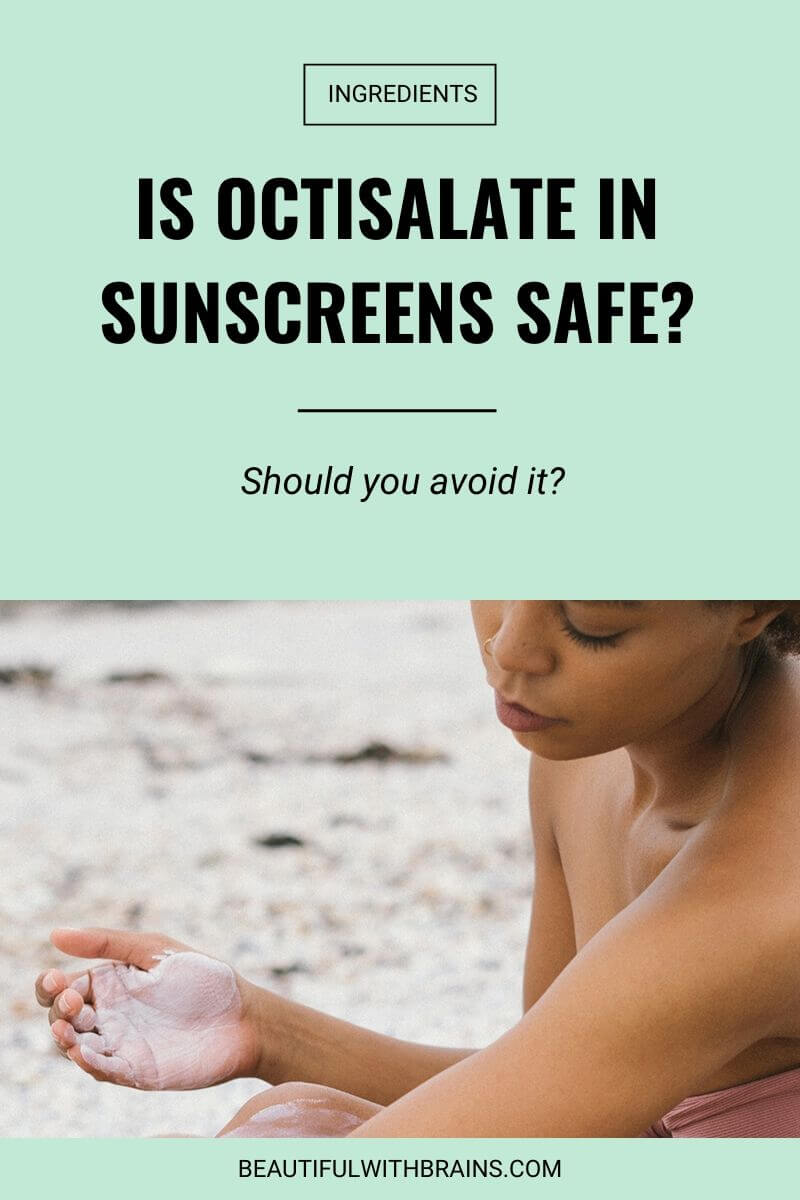
Is Octisalate in sunscreen safe?
This is a common UV filter no one talks about. It’s not praised to high heavens like zinc oxide. Vilified like Avobenzone. Or touted as a revolution like Mexoryl.
It passes under the radar, until someone tells you that the old generation of chemical sunscreen is out to kill you. Then you’re left wondering, “Does that include Octisalate, too?”
Let’s find out:
What Is Octisalate?
Octisalate is an UV filter that goes by many names (ok, three):
- Ethylhexyl Salicylate (this is how it usually appears on ingredient lists)
- Octisalate (the name I’ll use cos it’s easier to remember)
- Octyl Salicylate
For those of you who are more scientifically-minded, Octisalate is an ester that forms via the condensation of a salicylic acid with 2-ethylhexanol.
For everyone else, Octisalate is a colourless liquid with an oily consistency and a mild floral scent.
Octisalate Benefits: What Does It Do For Skin?
Octisalate is an UV sunscreen filter that protects skin from the entire UVB range (280-320nm).
It works like this: like all other UV filters out there (including zinc oxide and titanium dioxide), Octisalate absorbs UV rays and transforms them into a less damaging form of energy (heat).
FYI, it’s not as impressive as you think. Octisalate is a weak UVB filter. Used alone, it doesn’t offer adequate protection from UVB rays. You need to use it with other UV filters to boost the SPF of the sunscreen.
P.S. This is quite common with chemical sunscreen filters. Most of them protect from only one type of UV rays – and not even that well on their own. You need to use 4 or 5 to provide adequate sun protection.
Related: 5 Myths About Mineral Sunscreens You Need To Stop Believing Right Now
What Else Does Octisalate Do In Sunscreens?
Protect skin from UVB rays is its main job. But that’s not all it does.
The ethylhexanol portion means it has two extra aces up its sleeves: it gives sunscreens emollient and water-resistant properties that can make skin softer and smoother.
Is Octisalate Stable?
Octisalate is NOT a stable UV filter. When exposed to sunlight, it undergoes some degradation.
We don’t have enough data to judge the impact this degradation has on its effectiveness. But that’s all the more reason to reapply your sunscreen frequently (at least every two hours at the beach!).
Related: How Often Do You Really Need To Reapply Sunscreen?
Does Octisalate Cause Breakouts?
Nope, Octisalate doe NOT cause breakouts. Even oily skin can use it – unless you can’t stand its oily texture.
Is Octisalate Safe?
Octisalate has a good safety profile.
Of course, if you listen to the natural brigade, they’ll tell you that all chemical sunscreens are the devil and will kill you. But there is absolutely no scientific evidence that, in the small concentrations used in sunscreen (max 5% in the US and Europe and 10% in Japan), Octisalate is dangerous.
This is one UV filter you can use safely. Phew!
What Are The Best Sunscreens With Octisalate?
- Clinique Broad Spectrum SPF 30 Sunscreen Oil-Free Face Cream ($27.00): available at Clinique and Ulta
- La Roche Posay Anthelios Clear Skin Dry Touch Sunscreen Broad Spectrum SPF 60 ($19.99): available at Dermstore and Ulta
- Paula’s Choice Resist Skin-Restoring Moisturizer SPF 50 ($33.00): available at Cult Beauty and Paula’s Choice
- Ultrasun Extreme SPF 50+ (£22.00): available at Escentual, Feel Unique, Look Fantastic and SpaceNK
The Bottom Line
Octisalate is a safe, but weak UVB filter. It helps protect your skin from UVB rays, but you need to use it together with other UV filters to get adequate sun protection.
What’s your take on Octisalate in sunscreen? Share your thoughts in the comments below.


I like using Tinosorb M and S. I believe it is available in Canada but not the USA?
Jeff, I think so, too. The USA is extremely slow at approving new UV filters.